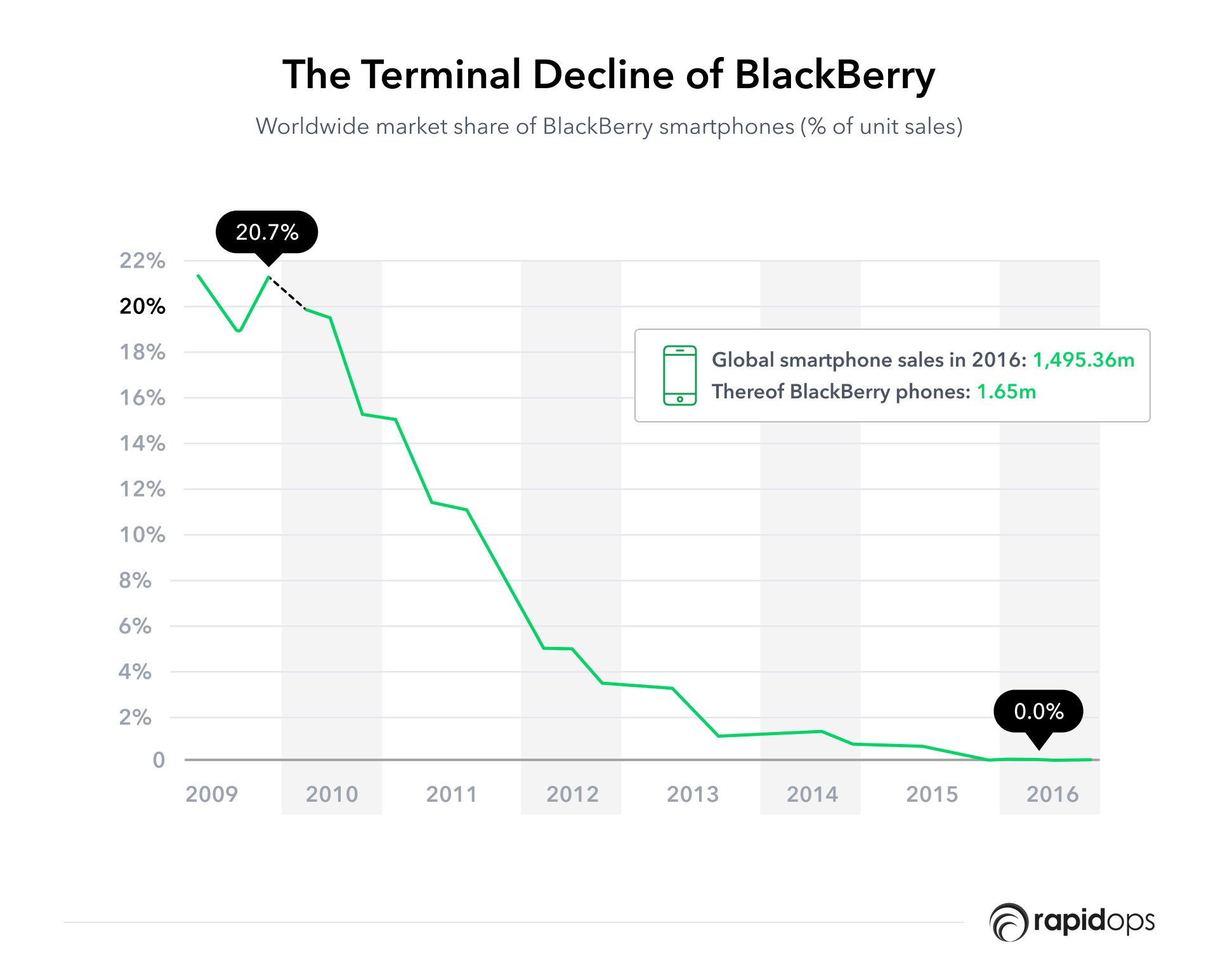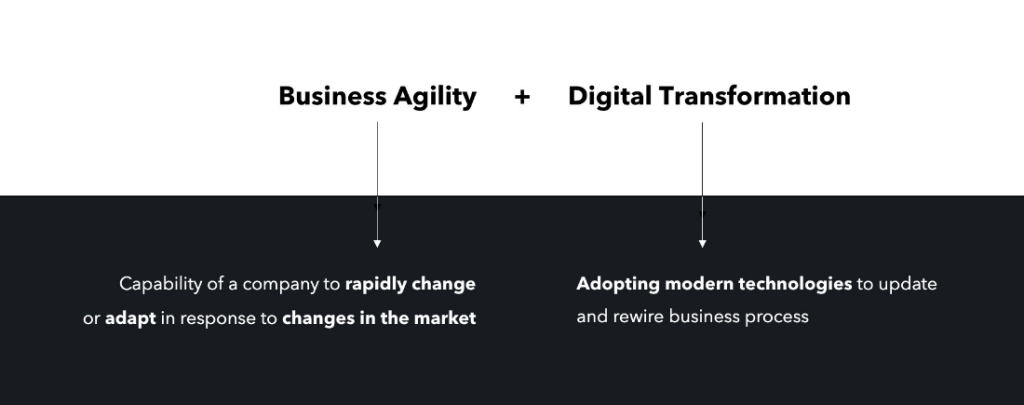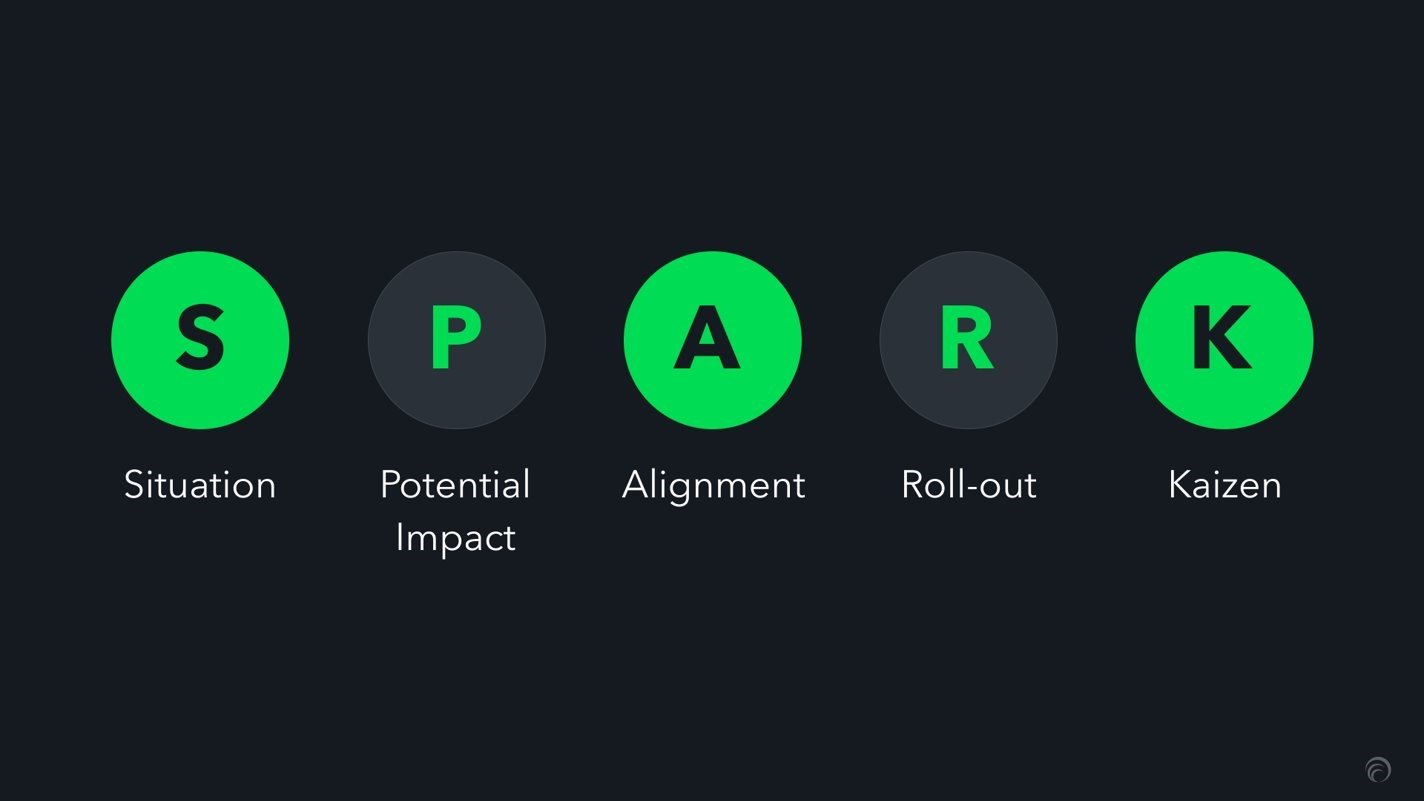So, back in 2007, BlackBerry was the top gun of the smartphone market. Fast forward a few years, and they started losing their edge to the brands that were offering something more than physical QWERTY keypads.

But why and how did BlackBerry fail?
They failed to pivot quickly when touch screens became the norm and took the user experience to another level, changing how customers perceive smartphones!
Remember NOKIA??
Well, we don't need to say anymore.
In stark contrast, once a DVD rental service, Netflix anticipated the paradigm shift to streaming services and transformed itself, decimating traditional cable: RIP Blockbuster!
At the core of such make-or-break decisions is business agility.
What is business agility?
Everything is moving fast in the digital age. If you do not adapt to the changes quickly, your competitors plan to get a hyper boost and pull a reverse UNO on you.
Hence, there is a need for business agility! But what is business agility?
An organization can compete and thrive in the constantly changing digital age by quickly responding to market changes and emerging opportunities with innovative, digitally enabled tactics to remain competitive and profitable.
Why is there a need for business agility?
"Change is not only inevitable but has accelerated in today's disruptive scenario."

Several factors affect the causality of businesses needing agility to transform their business in this dynamic and volatile market. We are mentioning some of them here:

1. Rapid technological advancements
The pace of technological change is accelerating. Whether AI, blockchain, IoT, or other emerging technologies, businesses need agility to integrate these technologies into their operations swiftly or risk obsolescence.
2. Shifting consumer expectations
Today's consumers are more informed, empowered, and demanding. They expect instant gratification, personalized experiences, and seamless omnichannel interactions. An agile business can adapt to these evolving expectations and stay customer-centric.
3. Increased global competition
Globalization means businesses aren't just competing with local rivals but with global ones. To stay competitive, they must be agile enough to quickly adapt to market changes, launch innovative products, or enter new markets.
4. Uncertain economic landscape
Economic downturns, pandemics, political shifts, and natural disasters can affect market stability. Agile businesses can pivot in response to such unforeseen challenges, reducing potential losses or even capitalizing on new opportunities.
5. Need for continuous innovation
Businesses must continually innovate. An agile culture fosters innovation by encouraging experimentation, learning from failures, and iterating on ideas.
6. Supply chain volatility
Trade wars, pandemics, or environmental issues can disrupt supply chains. Agility ensures businesses can quickly reconfigure their supply chains, ensuring continuity.
Introducing SPARK 1.0: The framework for business agility
Change is the only constant, and amidst the constant chain reaction caused by technological disruption, businesses often race against time, trying to stay ahead of the curve by either adapting a new technology or adopting it.
What if there was a blueprint that didn’t just help you keep pace but ensured you led the charge, equipped with the agility to pivot, adapt, and thrive in this competitive digital age?
Enter SPARK, the compass for business leaders navigating the unpredictable seas of the constantly disruptive digital era.
But before we go ahead, let’s see how the SPARK framework helped Rapidops adopt the best strategy for adapting generative AI in its overall business process.
The AI, generative AI, craze took the world by storm! And by storm, we mean STORM!

Everyone was talking about Generative AI; everyone was bemused by ChatGPT and the endless possibilities it was bringing to the table.
Social media contained memes, videos, and how-to's regarding generative AI and ChatGPT! Riding the buzz, people at Rapidops, too, started using ChatGPT or other generative AI tools to get their work done, boosting their overall productivity.
The major challenge that Rapidops faced was teams working in silos, which led to isolated efforts and a lack of collaboration.
As an organization, Rapidops realized the necessity for a well-defined plan and structure to facilitate the smooth integration of this new technology. And that’s when there was a spark!
What happened because of the spark?
- The content team doubled its productivity.
- There was a 67% boost in design team efficiency.
- 5+ product features pushed in a span of 4 months!
So, what’s SPARK 1.0?
SPARK is the framework that helped Rapidops achieve everything that we have mentioned in the above section. It helped us create a baseline, a starting point, that guided us further in moving forward as an organization and helped us integrate generative AI seamlessly into our processes.
We are sure that as business owners if you follow this SPARK framework, you will also seamlessly take your organization to the next level and achieve transformation like never before.
Core elements of SPARK 1.0: The business agility framework
The difference between thriving and merely surviving is SPARK. And we are not lying. We presented our SPARK framework in a recent AGILE meet, and the audience was astounded by what we have achieved in a span of just 4 months.

S-Situation
"Where do you stand in a dynamically disruptive market?"
Businesses must stay acutely aware of their situation. This means gauging where they currently stand based on evolving trends, the efficacy of their methods, and their overall readiness for the tidal wave of digital transformation.
Jumping on the bandwagon is not an option if you have already spent or allocated your budget on something that was relatively new 6 months ago! You cannot go overboard in pursuit of the best view from a ship’s deck.
- Where does your organization stand?
- Does the adoption of this new technology look like a good fit for you?
- Is this technology better than what you already have in the pipeline?
- Is there any major opportunity cost involved in switching between the technologies?
- Is this new technology going to make your process more efficient?
- Is your organization ready to adopt this technology?
- If yes, then great, but if not, then what needs to be done to adopt it?
Ask these questions and let there be an open discussion within your team or at least with the people concerned.
Companies deeply rooted in understanding their present situation are more apt at adjusting their sails.
P-Potential impact
"What if every disruption is an opportunity? Witness the ripple effect on your people, products, and clients."
As Thanos helped us establish in the above section, change is inevitable.
But how a company responds to that change, especially concerning its Potential Impact, determines its long-term success.
Every disruption, every trend, and every shift have ripple effects that reverberate through a company's people, its products, and, ultimately, its clients.
Proactive businesses don't merely react to these changes but anticipate and leverage them for exponential growth.
Businesses have a lot of added responsibility. As a business owner, you will agree with this statement. Making random decisions is impossible as you must think about how the decision you take will affect your people, your product/service, and, majorly, your clients.
A-Alignment
"Your strategy is your North Star. But is every crew member on board?"
Now that you know where your company stands with the adoption of a new technology for your next digital transformation initiative, it's time to focus on alignment.
Alignment is the backbone of effective strategy execution. It's not just about crafting a strategy; it's about ensuring every team member understands and is committed to it, from the C-suite to the interns.
This alignment extends to obtaining buy-in from stakeholders and ensuring resources are aptly allocated, ensuring the ship moves cohesively toward its destination.
R-Roll-out
"A vision without execution is just a dream. How do you empower your team to turn strategy into action?"
Strategies are just the starting point, but the actual magic lies in the roll-out time. Why? Because this is where your whole vision transforms into action. This encompasses the nitty-gritty of strategy execution, the empowerment of individuals to act upon the strategy, and the establishment of a robust accountability system.
Many times, you get so caught up in the designing of strategies that you do not think of the time it will take to take action on them, which is a very costly mistake.
Rapidops has a build-fast-fail-fast approach, but what is more important is to learn fast from those failures.
K-Kaizen
"Perfection isn't a destination; it's a journey. Are you constantly refining your path forward?"
Measure, learn, and improve!
So, you went in-depth in knowing the strengths and weaknesses of your business by gauging where it stands, you drew the potential impact a new technology adoption will have on your business, you measured the capabilities of the resources, you aligned your business strategies with end goals and created a roll-out plan.
But what is the point of executing your plans in a timely manner if you do not have a system in place that measures the impact of your initiative?
How will you know that it is the right course of action or if any countermeasure is needed for course correction?
Go back to the drawing board at the right time, brainstorm what needs to be done, and improve the outcome!
So, yes, that is SPARK 1.0 for you! A framework designed for businesses that want to adopt and adapt various digital technologies into their processes to gain better efficiency and have an edge over their competitors.
Why a SPARK is vital for business agility?
SPARK 1.0 offers a comprehensive blueprint, enabling businesses to navigate the digital age's turbulent waters to seamlessly adopt, integrate, and adapt to digital transformation. With the holistic approach inculcated within the SPARK framework with a pinch of agility, we are sure that you will find yourself not just surviving but thriving and leading your digital initiatives from the front.

Saptarshi Das
Content Editor
9+ years of expertise in content marketing, SEO, and SERP research. Creates informative, engaging content to achieve marketing goals. Empathetic approach and deep understanding of target audience needs. Expert in SEO optimization for maximum visibility. Your ideal content marketing strategist.

Let’s build the next big thing!
Share your ideas and vision with us to explore your digital opportunities
Similar Stories
- Transformation
- undefined Mins
- March 2022

- Transformation
- undefined Mins
- March 2020

- Transformation
- undefined Mins
- February 2022


Receive articles like this in your mailbox
Sign up to get weekly insights & inspiration in your inbox.
